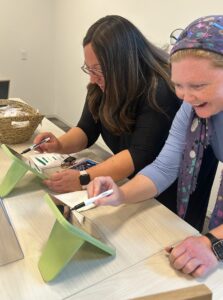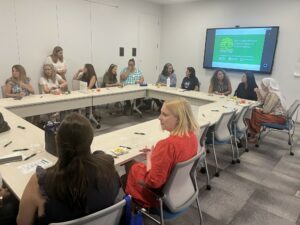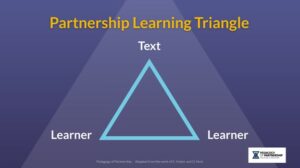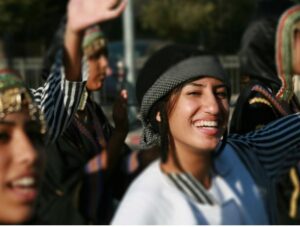We are in the immediate wake of the most significant Jewish event of our lifetime. Jews all over the world will mark time as everything before October 7th, 2023, vs. everything after October 7th, 2023.
Still in the sheer horror of the moment, Jewish philanthropy–individual donors and foundations alike–are supporting Israel to an unprecedented degree. This is exactly what we should be doing, and it is not the only thing we should be doing.
Our actions in this moment will have a lasting impact, for better or worse, on the American Jewish community. Right now, the Jewish philanthropic community must have a “yes, and” approach toward funding. Yes, we absolutely need to support Israel and Israelis. We need to contribute mightily to the multitude of needs Israel has—for the orphans, the evacuees, the businesses whose employees are now on the front lines, the mental health of the traumatized. All of these causes need our philanthropic support. Yes, give.
And the American Jewish community needs to stay intact; unless philanthropy steps up in the U.S. as well, there is a genuine chance much of the organizational structure we have spent generations building will be stretched to the limits. The structure is holding for now. But I am looking more long-term over months and perhaps years as this war continues. There are very real risks that could break our community.
During Covid, the ENTIRE world was affected. In this instance, Jews are uniquely affected. The need for increased philanthropy in this moment is great. We must address key areas:
- Increased security, safety, and mental health support for Jewish organizations’ staff and participants.
- Staffing shortages at organizations that depend on employees living in Israel; this includes the Israel offices of American organizations, and Israeli workers who help sustain Jewish experiences here (i.e. Jewish overnight camps rely heavily on Israeli counselors and staff, and recruitment for these positions ordinarily occurs in November and December).
- Staffing shortages here in North America as professionals say “enough” of emergencies and the mass stress they bring
- Effective responses to requests from Jewish organizational leaders, educators, curriculum content developers, parents, youth, and young adults who need to communicate and educate about what is happening and how to talk and teach about it.
- Disruptions to educational programs that involve travel to/from Israel.
- Fundraising needs for organizations whose philanthropic supporters are diverting resources to the much-needed aid and assistance for Israel.
These needs are both immediate and will remain for some longer period of time. Our synagogues, day schools, JCCs, social services, our people and our institutions, are the beating heart of Jewish life outside of Israel. Now more than ever, we must give and give generously to cement their existence, so that they may cement ours. If we don’t, we risk losing a generation of North American Jews due to fear, shrinking Jewish engagement offerings, and lack of Jewish professionals equipped with resources and training to do their job effectively.
So, continue or start giving to Israel.
And continue or start giving to the North American Jewish community.
This is a moment to dig deeper than we ever have for Jewish related philanthropy, and we need to give more than ever by a large factor. The time is now. The need is urgent.
This may mean giving less to other worthy causes (e.g., hospitals, museums) that are not in dire need or in a crisis. Instead, direct that money to needs in Israel, to your local Jewish day school, JCC, Jewish camp, and Jewish student organizations. There are countless other very worthy Jewish options from which to choose.
In this moment of despair, I remain intentionally hopeful. Hatikvah, literally “The Hope,” defines the Jewish people and the story of Israel. Chief Rabbi Lord Jonathan Sacks, z”l, juxtaposes “optimism” with “hope” as a call to action:
Optimism and hope are not the same. Optimism is the belief that the world is changing for the better; hope is the belief that, together, we can make the world better. Optimism is a passive virtue, hope an active one. It needs no courage to be an optimist, but it takes a great deal of courage to hope.
We must continue to hope. Each of us can be Jewish philanthropists to actively make our situation better. We, the Jewish people, need all hands-on deck, and we need each other for the long haul. Generations from now, I see a thriving North American Jewish community, along with a thriving Israel. Both of those will come to fruition, but only if we hope and act.
Barry Finestone is President and CEO of the Jim Joseph Foundation
originally published in eJewish Philanthropy. Banner illustration by Anastasia Usenko/Getty Images.



 PoP at school, reflecting on the very questions we asked parents to consider about the nature of havruta learning. The students offered practical advice for how to make the most of one’s learning. Parents were enchanted and took to heart their children’s sound advice:
PoP at school, reflecting on the very questions we asked parents to consider about the nature of havruta learning. The students offered practical advice for how to make the most of one’s learning. Parents were enchanted and took to heart their children’s sound advice: Sephardi and Mizrahi lens. The online quarterly publication offers fresh and impactful content that elevates the perspectives and raises the profile of Sephardi and Mizrahi people and communities.
Sephardi and Mizrahi lens. The online quarterly publication offers fresh and impactful content that elevates the perspectives and raises the profile of Sephardi and Mizrahi people and communities.  JIMENA also has undertaken
JIMENA also has undertaken